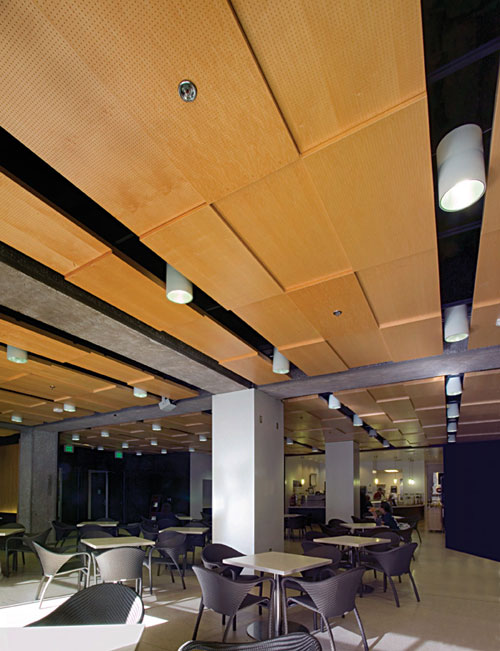Can You Hear Me? Optimizing Learning through Sustainable Acoustic Design
Learning Objectives:
- Discover new acoustical materials and technology that improve speech intelligibility in classrooms.
- Discuss strategies for reducing building footprints using active acoustic systems.
- Review ANSI/ASA 12.60-2002 Acoustical Performance Criteria, Design Requirements, and Guidelines for Schools criteria for good learning environments.
- Explore perforated metal and wood panel systems that contribute toward the sustainability goals espoused by schools.
Credits:
Architects, engineers and researchers are learning more about how sound waves influence the learning environment and the design of schools for 21st century children and adults. This article will review some of the principles behind the acoustic properties necessary for great learning environments. The professional will review new high-performance acoustic materials, including "active acoustics" - the newest technology for the manipulation of sound in space. These new materials include lightweight gypsum wallboards dimensionally similar to a typical 5/8" drywall, but with superior acoustic absorption. In addition, this article will discuss new high-performance perforated wood veneer and metal panels that can satisfy any sustainable design checklist.
ACTIVE ACOUSTICS AND RIGHT- SIZING PERFORMANCE SPACES
"In general no one acoustic design is perfect for all performance types. Different modes of communication, whether it is speech or music, require the design of a different reverberation time. For speech intelligibility, a low reverberation time is required; for unamplified singing or instrumental music, long reverberation designs are necessary," says Roger Schwenke, Ph.D., architectural acoustics expert at Meyer Sound Laboratories, Inc. Rooms with high ceilings, large cubic volume and hard, heavy surfaces are needed for musical performances. For classrooms, where good speech intelligibility is important, rooms can be smaller and be made of lightweight absorptive surfaces. Because the physical volume and surface treatment are so different, these spaces are mutually exclusive and may require schools and colleges to invest in multiple performance spaces, as well as large classrooms, with limited usability over the school year.
One 21st century approach to acoustics is to design a flexible space that can meet the requirements of all types of performances, from classroom to concert hall. This perfect space can be constructed to optimize all of these performances through active acoustic systems, providing the listener as well as the performer with good sound quality. As schools slash budgets, new technology provides a means to reduce the building footprint in order to combine large spaces into smaller, more flexible lecture and performance spaces without losing acoustic viability.
 |
BIM-driven manufacturing reduced the cost of this ceiling's visually interesting relief design.
Openings for sprinklers were precision cut in the factory to simplify field installation and create
a clean look. The aluminum and maple veneer system gives the dramatic look of a substantial
wood ceiling, but is very lightweight and provides easy accessibility to the area above. University of Southern California School of Law Café, Los Angeles, California Photo courtesy of Ceilings Plus |









